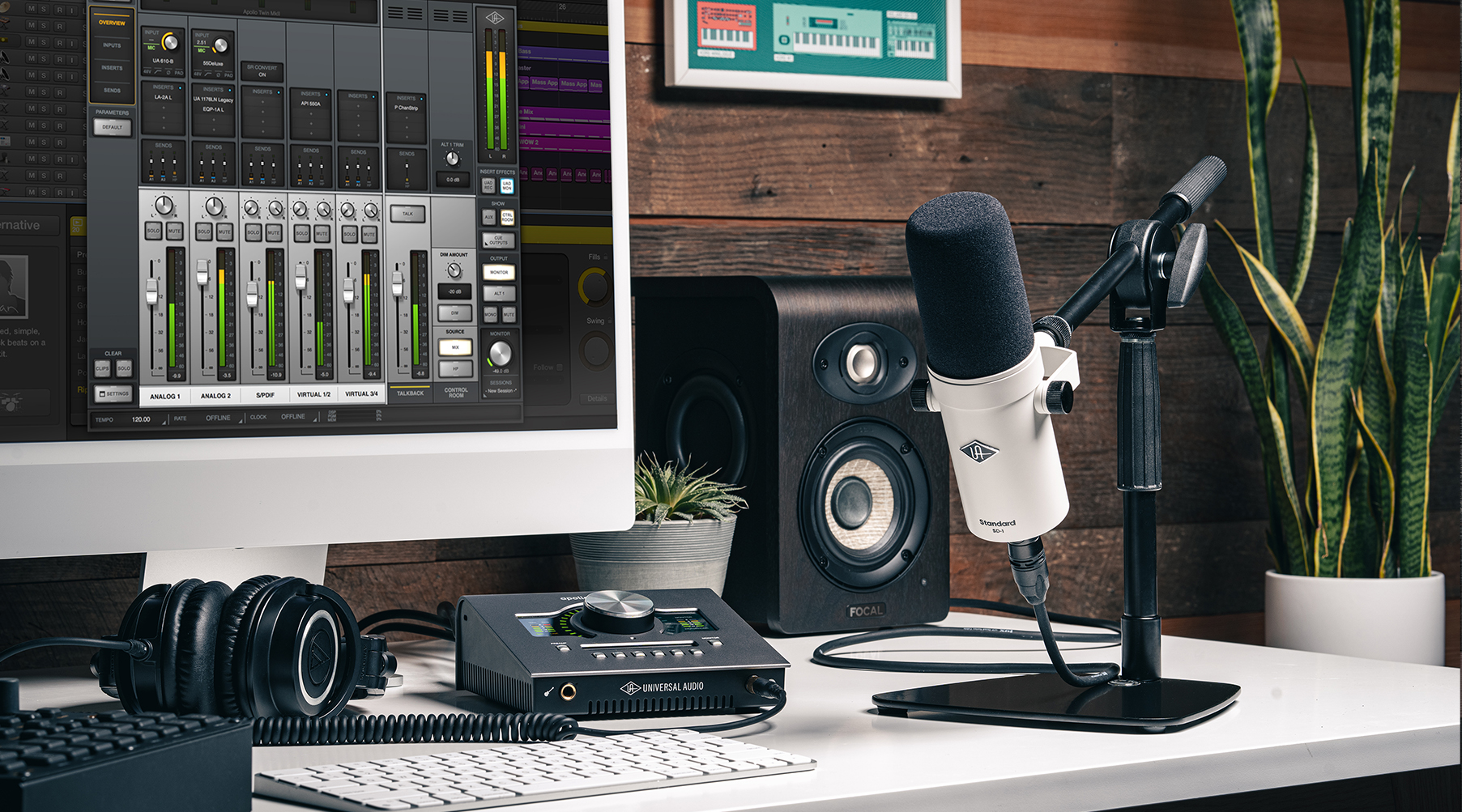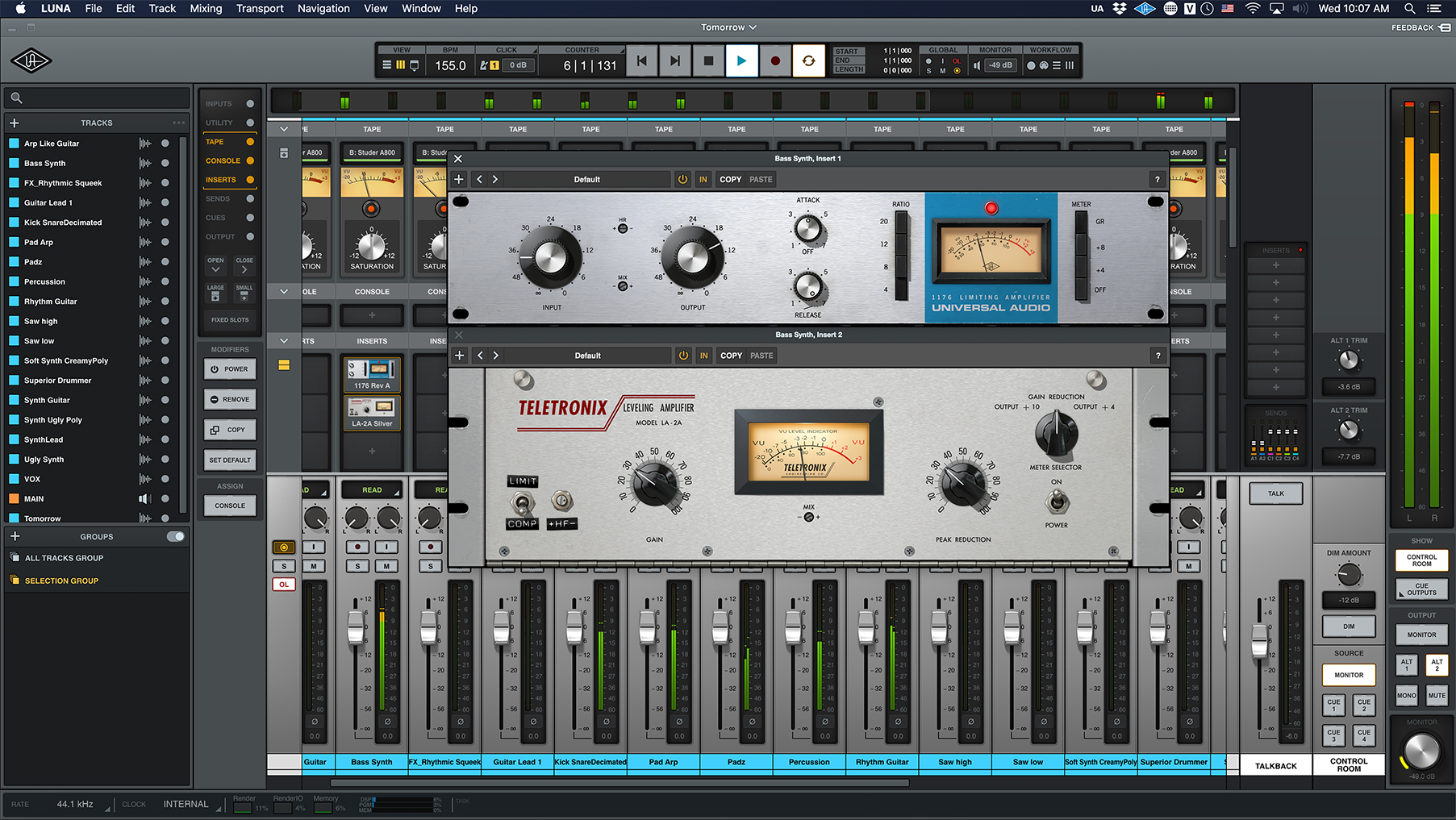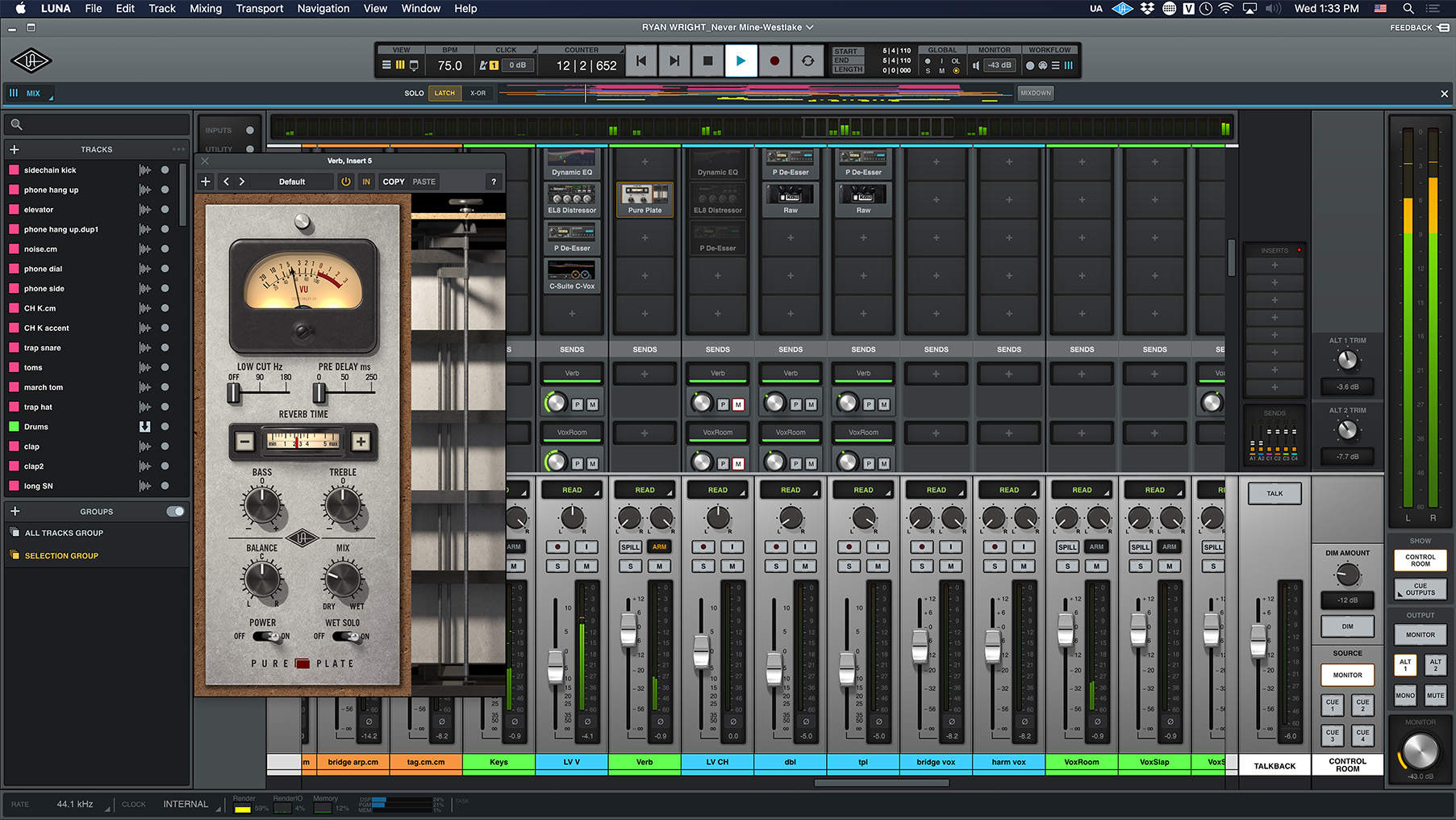
How to Use Plug-Ins on Vocals
Universal Audio’s guide to using UAD plug-ins to mix professional vocals.
Nailing your vocal production can mean the difference between your song becoming a hit or getting skipped. Here, we’ll show you how to mix vocals with UAD plug-ins and get playlist-worthy recordings that pop out of the speakers.
Looking for the best vocal plug-ins for any genre? Scroll all the way down where we reveal our five top-selling vocal plug-ins and the best UAD vocal chains under $500.
Prep for Pro Sound
Using proper equipment and techniques is the first step to getting vocals that sound professional. These are our three tips for capturing clean recordings that will get you the best results when applying plug-ins while you mix:
Use acoustic treatment. Before you set up to record, do a quick check of your room. Place area rugs and hang blankets over hard surfaces to reduce background sounds while tracking.
Choose the right mic. Large diaphragm condenser mics provide a wider frequency response than dynamic or ribbon mics. They are the preferred choice for recording vocals in an isolated environment.
Leave headroom. While recording, peaks as high as -6 dB are acceptable, but aim for signal peaks between -18 and -12 dB so you have plenty of headroom for gain staging.
Use Clean EQs & Filters First
Once you have the best performance and recording possible, you may find there is still needed clean up work.
The goal of subtractive EQ is to remove any muddy, boxy, or harsh frequencies that may be present in your recording. It’s best to address these problems first, as any additive EQ or tone shaping at this point can make these issues more pronounced.
Apply a graphic EQ such as the Massenburg® MDWEQ5 Parametric EQ and add a low pass filter to cut out rumble. Then, experiment with notching out offending frequencies. Cut 200-300 Hz to reduce boom, 500 Hz to reduce boxiness, and 3-4k to eliminate harshness in a vocal.
If your vocal is suffering from unwanted room noise, specialty plug-ins like the C-Vox™ Noise & Ambience Reduction adaptively attenuate offending ambience, without the guesswork that comes with using an EQ.
Add Auto-Tune to Correct Pitch
Pitch correcting vocals has become standard practice in modern music production. Antares Auto-Tune Realtime Advanced will give you accurate, pitch-perfect vocals while mixing, or while you record live using an Apollo audio interface with built-in Realtime UAD Processing.
Watch: Recording Vocals with Auto-Tune
How to Use Auto-Tune
First set the key to match your song. Then adjust the retune speed until you achieve the desired effect. While some genres call for a fast retune speed, making the effect more obvious, a slower speed will guide your vocal into tune without sounding over-processed.
What’s the Deal with De-Essing?
De-esser plug-ins attenuate sibilance caused by sharp consonants. If your vocal recordings have distracting lisp sounds or general high-end issues, plug-ins such as the Precision De-Esser are the easy fix. They also allow you to add additional top-end to your vocal later in the mix, without sounding harsh.
Learn the Secrets of Compression
Compressors help keep your vocal at a constant level, ensuring that it sits front and center in your mix and doesn’t get lost behind other instruments. Some compressors also add harmonic content, giving your recordings added vibe and tone.
The 1176 Classic Limiter and Teletronix® LA-2A are two of the most popular compressors for vocals, and they are often used in tandem.
With its fast attack and release, the 1176 is ideal for controlling peaks. The LA-2A can be added afterward to bring up the body of the vocal and inject classic tube warmth.
With any compressor, begin by experimenting with the threshold setting until you hear a noticeable reduction in gain. Different music styles call for different settings, but typically 3 to 6 dB of gain reduction is enough to hear a compressor working.
Output gain is used to make up for the attenuation achieved by the compressor. Once you’ve dialed in the right amount of compression, try to apply enough output gain so your vocal sits at the same level as the original recording.
Learn More: Audio Compression Basics
Boost & Enhance with Additive EQ
Additive EQ is used to boost frequencies and help your vocal shine through the mix. For this type of processing, you’ll commonly reach for an analog emulation, which lends vintage warmth even at extreme settings.
The Pultec Passive EQ plug-in is an emulation of a legendary tube equalizer, and is an excellent choice for bringing out the top-end in a vocal without adding harshness.
Watch: Mixing Vocals with the Pultec EQP-1A
Use Gain for Richness & Harmonics
Saturation plug-ins such as the Thermionic Culture Vulture add harmonics and texture. This is useful for vocals lacking tone and character.
With this type of plug-in, you typically dial in your gain and then utilize the mix knob to blend the saturated signal with the dry signal. For subtle harmonics, you may use just a touch of the wet signal. For more aggressive distortion, simply increase the mix knob.
Finish Off Your Track with Reverb & Delay
Reverb, delay, and modulation plug-ins add space and dimension. One of the most enjoyable steps in the mixing process, adding these types of effects can put the finishing touch on your recordings.
Unlike compression and EQ, which are commonly applied directly on a track insert, reverbs and delays are typically processed via a bus. This allows you to blend the effect in with your dry vocal.
Reverb can make your vocal sound larger than life. When using plug-ins like Pure Plate Reverb, try adjusting the decay and pre-delay time until your vocal sits naturally with other elements of your song.
Delays like the Galaxy Tape Echo add extra movement and rhythm. Adjust the rate and feedback controls to get your vocal to sit nicely with the rhythm of the song. For a more precise sound, experiment with quarter and eighth note settings to further align with the song’s tempo.
Modulation effects add texture and width. Add a plug-in like the Studio D Chorus to a bus for subtle movement, or apply it directly on a background vocal to push it back in the mix.
Watch: Mix Tips with Galaxy Tape Echo
Build a Vocal Plug-In Chain for any Genre
If you’ve made it this far, you may be curious about the best UAD plug-ins for building your vocal chain. While there are no hard and fast rules, using these effects is a great starting point for getting pro sound in any genre.
Five Top-Selling UAD Vocal Plug-Ins
Best UAD Vocal Chains Under $500
Modern: SSL 4000E Channel Strip > C-Vox Noise & Ambience Reduction > Sonnox Oxford Suppressor
Vintage: Neve 1084 Preamp & EQ > 1176 Classic Limiter > Precision De-Esser
For further reading, be sure to check out these related articles: How to Record Hip-Hop Vocals, How to Record Vocals, How to Record with Apollo Interfaces
— Ezra Meijer Barnett, McCoy Tyler




